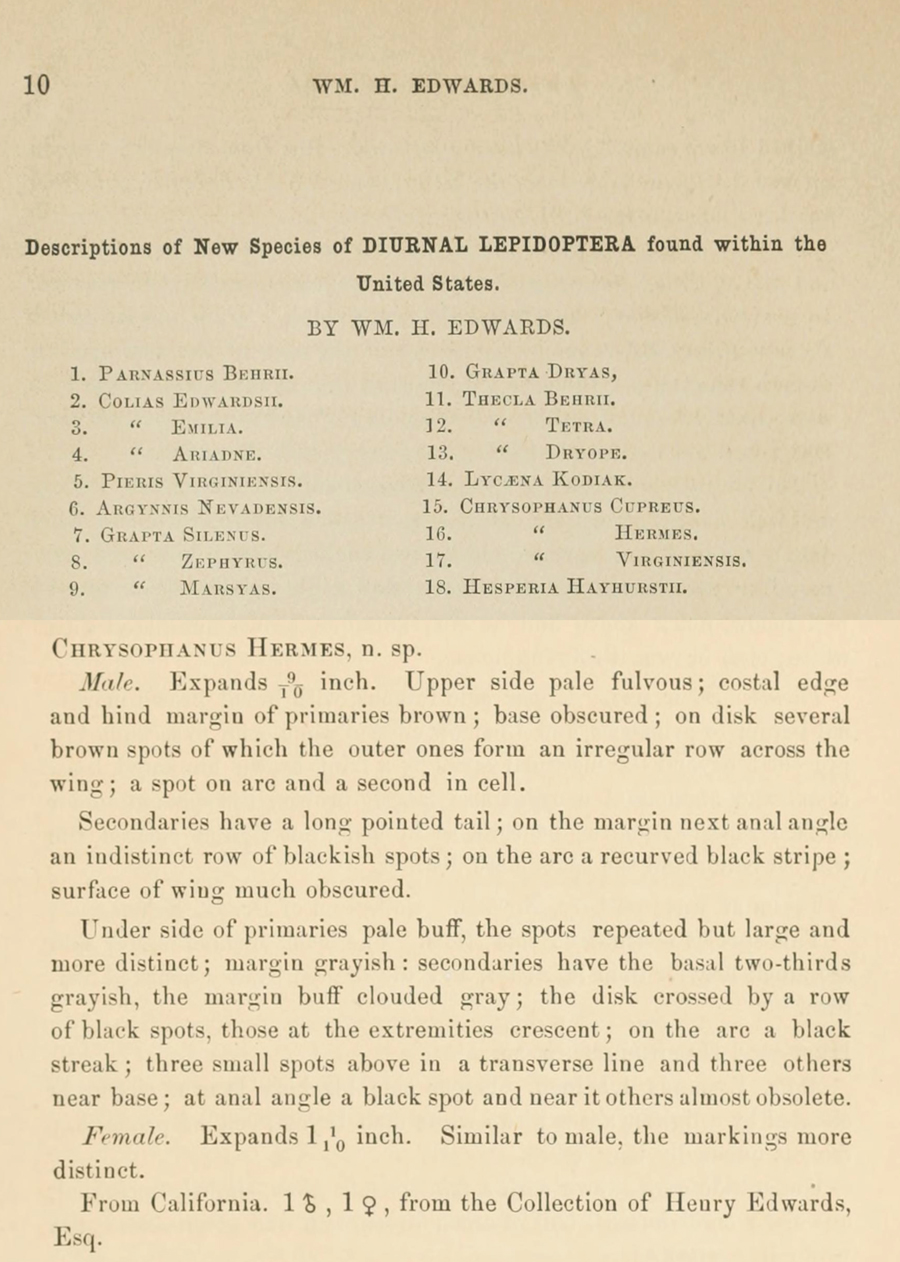Tharsalea hermes
Hermes Copper
Hermes copper is a rare butterfly closely associated with its sole larval food plant, spiny redberry (Rhamnus crocea), limited to San Diego County and (formerly?) a bit of northwestern Baja. It is considered threatened under the Endangered Species Act. Fire, development, and drought have devastated the former range of this butterfly; of 98 known locations with hermes occurances historically, 72 of them are now either considered "extirpated" or "presumed extirpated" (Federal Register, Vol.86, No.242, pp.72394ff.).
Interestingly, the butterfly's range is smaller than the total range of Rhamnus crocea, suggesting that not all of the plants are suitable for the butterfly. So why does hermes live happily in some patches of spiny redberry while avoiding others? Knowing its habitat requirements is obviously important for an imperilled insect. The answer may have to do with certain secondary compounds in the plants. The amounts of these compounds, which, among other things, tell females a leaf or stem is suitable for egg-laying, can vary from place to place depending on local climatic differences (temperature, rainfall). And according to a great study by Liberty I. Malter*, there do seem to be differences in key secondary compounds corresponding to plants within and outside hermes habitats. More study is needed, but this seems like a promising avenue to me.
What isn't helping the Hermes copper - besides fire, development, drought, and being particular about which spiny redberry plants to use - is its sedentary nature and small population sizes. Eventual extinction would, sadly, not be surprising. Hopefully they can hang on and outlast us humans; they'll probably do better without us.
* See Malter's MS thesis, "Effects of Nitrogen Availability and Climate on Hermes Copper Butterly (Lycaena hermes) Habitat in Southern California," accessed here on 11/15/2023. This work was noticed in the 2020 Federal rule noted above.






